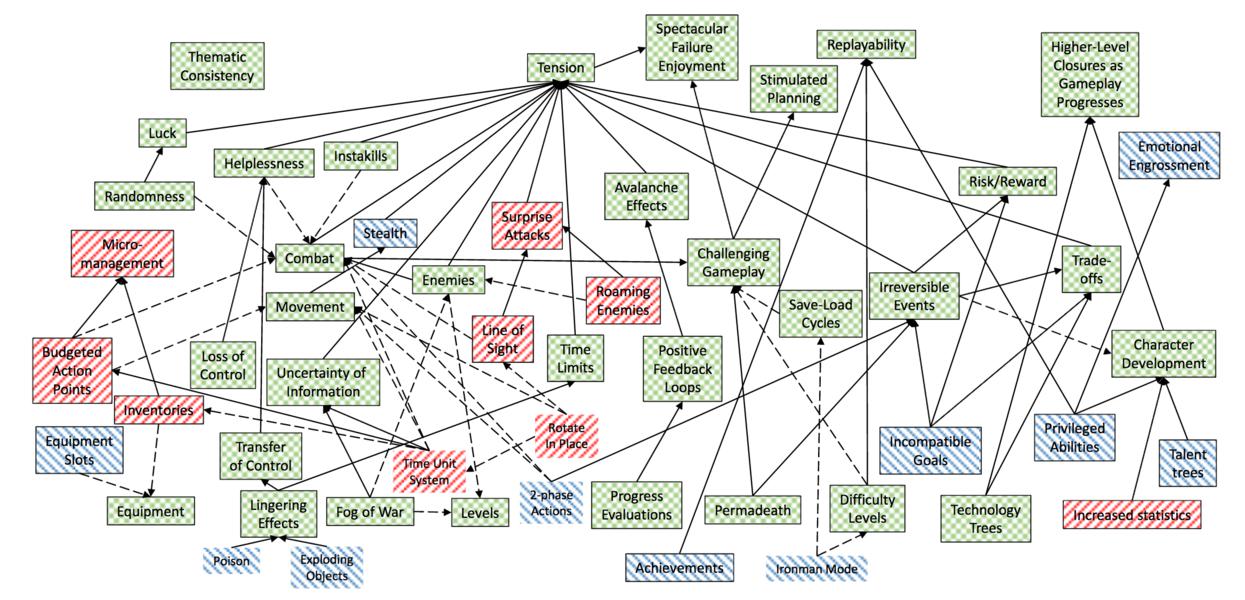
Alessandro Canossa, Staffan Björk, Mark J. Nelson (2014). X-COM: UFO Defense vs. XCOM: Enemy Unknown— Using gameplay design patterns to understand game remakes. In Proceedings of the International Conference on the Foundations of Digital Games.

We analyze X-COM: UFO Defense and its successful remake XCOM: Enemy Unknown to understand how remakes can re-propose a concept across decades, updating most mechanics, and yet retain the dynamic and aesthetic values that defined the original experience. We use gameplay design patterns along with the MDA framework to understand the changes, identifying an unchanged core among a multitude of differences. We argue that two forces polarize the context within which the new game was designed, simultaneously guaranteeing a sameness of experience across the two games and at the same time pushing for radical changes. The first force, which resists the push for an updated experience, can be described as experiential isomorphism, or “sameness of form” in terms of related Gestalt qualities. The second force is generated by the necessity to update the usability of the design, aligning it to a current usability paradigm. We employ game usability heuristics (PLAY) to evaluate aesthetic patterns present in both games, and to understand the implicit vector for change. Our finding is that while patterns on the mechanical and to a slight degree the dynamic levels change between the games, the same aesthetic patterns are present in both but produced through different means. The method we use offers new understanding of how sequels and remakes of games can change significantly from their originals while still giving rise to similar experiences.
Back to publications.